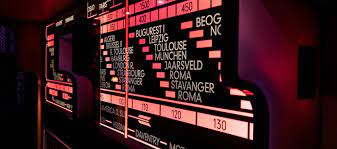
The aviation industry is defined by its dynamic and complex nature, making effective management of resources and operations essential for success. One crucial aspect of aviation management is flying hour management, the practice of monitoring, controlling, and optimizing the utilization of aircraft hours. This essential operation has become more manageable and efficient due to advancements in aviation-specific software. Here, we explore the concept of flying hour management and the role software plays in revolutionizing its processes.
What is Flying Hour Management?
Flying hour management is a critical operational aspect in the aviation industry, primarily involving the tracking and allocation of flight hours. This practice aims to ensure the optimal utilization of aircraft, enhance safety standards, maintain compliance with regulations, and ultimately, maximize profitability.
The challenges in flying hour management arise from the sheer complexity of the factors involved: aircraft maintenance schedules, pilot duty hours, varying flight durations, fuel efficiency, and regulatory limits, to name just a few. To navigate this intricacy, aviation organizations are increasingly turning towards technology and software solutions.
The Need for Flying Hour Management Software
Implementing flying hour management software automates much of the operational process, allowing for more precise planning, execution, and adjustment of flight schedules. Software applications are tailored to handle vast amounts of data in real-time, providing a more accurate, streamlined, and efficient approach to managing flight hours.
The Advantages of Flying Hour Management Software
1. Improved Operational Efficiency
Flying hour management software facilitates improved operational efficiency by automating the tracking, scheduling, and management of aircraft usage. This automation minimizes human error and ensures that all available resources are used optimally.
2. Enhanced Safety and Compliance
Regulatory compliance is a critical aspect of aviation operations. Advanced software can track and monitor each aircraft’s flight hours, maintenance schedule, and crew duty periods, ensuring compliance with regulations and enhancing safety.
3. Real-time Updates and Notifications
With real-time tracking, flying hour management software provides instant notifications about changes in flight schedules, maintenance needs, or regulatory issues. This proactive approach allows managers to address any problems promptly and effectively.
4. Cost Management
By ensuring optimal usage of aircraft and minimizing downtime, flying hour management software can help organizations significantly reduce operational costs. Additionally, it can predict maintenance needs based on flying hours, allowing for more effective budgeting and planning.
Leading Flying Hour Management Software Solutions
Various software solutions have emerged as leaders in the field of flying hour management, each offering unique features tailored to different operational needs.
- ARMS® (Aviation Resource Management System): A comprehensive solution that combines operations control, flight dispatch, crew management, and other aviation operations facets into a single integrated platform.
- Aviation InterTec Services (AIS) Flight Operations: This software offers real-time updates on flight schedules and utilization, allowing aviation companies to maximize efficiency.
- ForeFlight Dispatch: A collaborative flight planning tool that integrates with scheduling software, providing a comprehensive solution for flying hour management.
- FlyPal®: A software that focuses on aircraft maintenance, flight operations, and crew management, offering a comprehensive approach to aviation operations.
The Future of Flying Hour Management
The adoption of software solutions for flying hour management marks a significant step forward in aviation technology. These platforms not only streamline operational processes but also enhance safety, improve regulatory compliance, and offer substantial cost savings.
As technology continues to evolve, we can expect flying hour management software to become more advanced and integrated, offering more in-depth analytics, predictive features, and real-time adjustments. The future of aviation operations lies in leveraging these technologies to their fullest potential, ushering in a new era of efficiency and safety in the industry.
 2018 ·
2018 ·
Leave a Reply